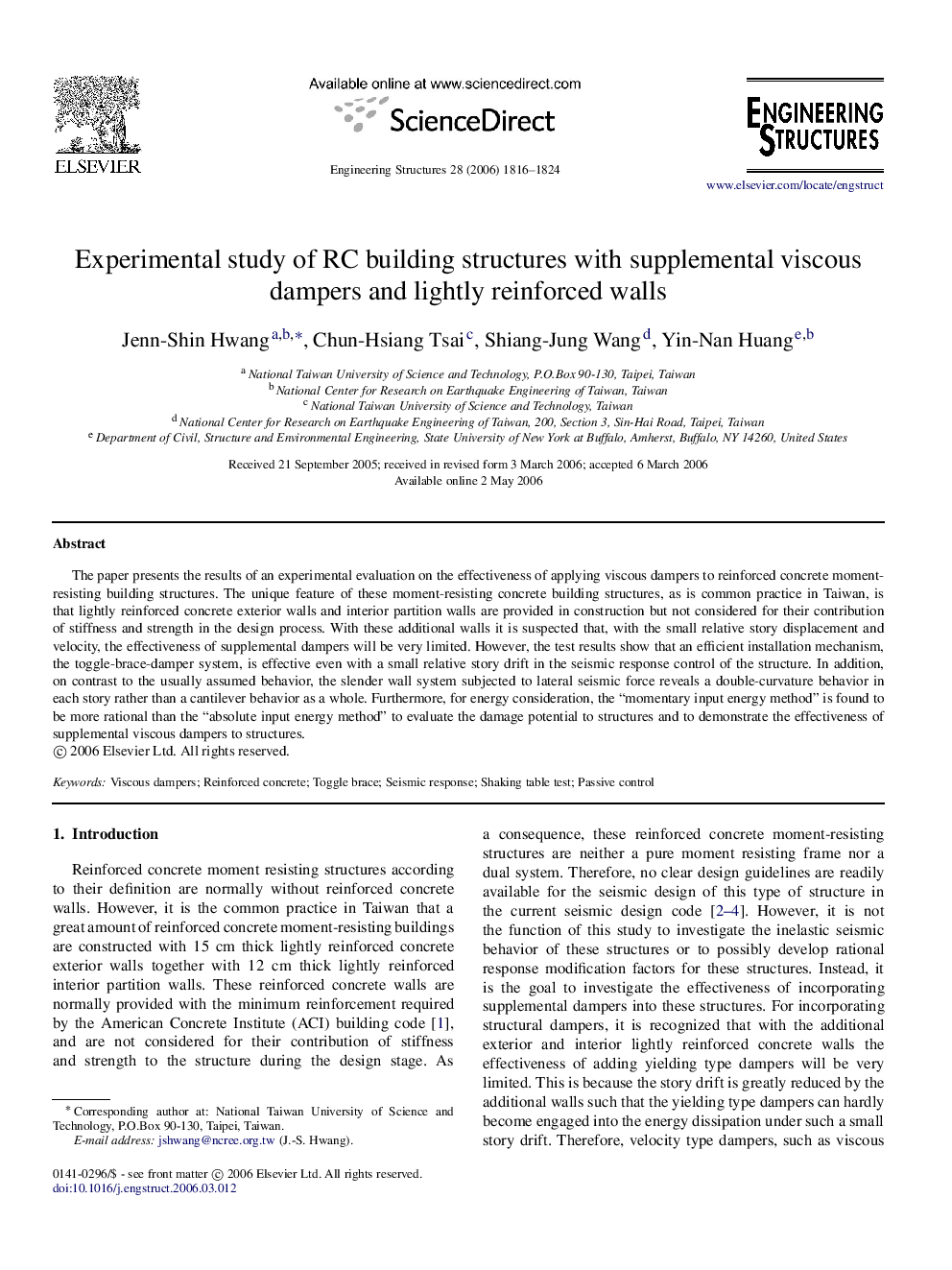| Article ID | Journal | Published Year | Pages | File Type |
|---|---|---|---|---|
| 269366 | Engineering Structures | 2006 | 9 Pages |
The paper presents the results of an experimental evaluation on the effectiveness of applying viscous dampers to reinforced concrete moment-resisting building structures. The unique feature of these moment-resisting concrete building structures, as is common practice in Taiwan, is that lightly reinforced concrete exterior walls and interior partition walls are provided in construction but not considered for their contribution of stiffness and strength in the design process. With these additional walls it is suspected that, with the small relative story displacement and velocity, the effectiveness of supplemental dampers will be very limited. However, the test results show that an efficient installation mechanism, the toggle-brace-damper system, is effective even with a small relative story drift in the seismic response control of the structure. In addition, on contrast to the usually assumed behavior, the slender wall system subjected to lateral seismic force reveals a double-curvature behavior in each story rather than a cantilever behavior as a whole. Furthermore, for energy consideration, the “momentary input energy method” is found to be more rational than the “absolute input energy method” to evaluate the damage potential to structures and to demonstrate the effectiveness of supplemental viscous dampers to structures.
